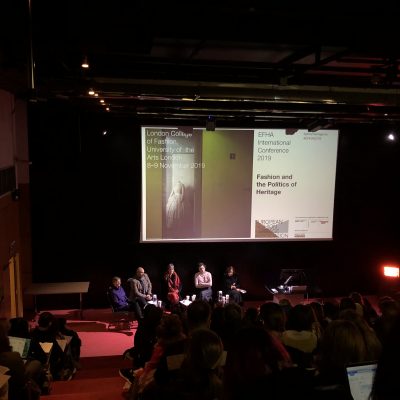
EFHA World 18.11.2019
22.04.2024
fashion and politicsfashion exhibitiongender
Unveiling gender dynamics throughout the 20th and 21st centuries
In an ever-evolving societal landscape, fashion stands as a profound barometer, deftly gauging and often foreshadowing shifts in cultural paradigms. Central to this dynamic interplay is the nuanced exploration of gender identity, encapsulated within the exhibition GENDERQUAKE at SCAD Museum of Art in Savannah, Georgia.
GENDERQUAKE ventures beyond the realm of fashion showcase, delving into the profound sociocultural implications woven into the fabric of clothing choices. At its core, the exhibition endeavors to dissect the profound relationship between fashion and identity, traversing historical epochs and contemporary epochs alike.
Fashion, as an embodiment of the corporeal, serves as a canvas for individual expression and societal reflection. The pieces showcased, spanning epochs from the inception of the 20th century to contemporary manifestations, bear testament to the evolution of societal attitudes towards gender. Liberation, Appropriation, and Rejection emerge as thematic undercurrents, each offering a profound exploration into the multifaceted dimensions of gender expression.
The first section is Liberation. Since the beginning of the 20th century, the urge of emancipation running through Western society called for a completely different approach to the relationship between the societal construct of gender and the demands of bodies defying labels and traditions.
Fashion designers seized the necessity to liberate bodies from the structures – sartorial as well as conceptual – imprisoning them, forcing them to perform specific social roles. Working on ‘erogenous’ zones as the bust, the waistline, the legs, the shoulders, designers disrupted the barriers of appropriateness, moving towards a freer appreciation of the body and its natural attributes.
In the second section, Appropriation, stereotypes are the most explicit, visible, and clear articulation of gender definitions. Designers have used the immediacy of stereotypical attributions to carve their own aesthetic and identify their muses.
Wearers have associated themselves with the ideas represented by these garments and exploited their communicative potential to express themselves without words.
Whether it refers to abiding by recognisable feminine or masculine codes or to subverting their meaning and applying them to unexpected bodies, the appropriation of stereotypes in fashion is often a declaration of intent, the expression of empowerment.
The last section is Rejection. The Western fashion system has dominated markets and their narratives. It also influenced and sustained the construction and enforcement of the gender binary. However, some garments and techniques were not ‘born gendered’, neither at some point they became gendered, and so they reject traditional – and, often, Western – notions of gender.
Designers engaged with a process that does not put the gendered body at the centre of creation. Quite the opposite: here the body is not an activator but a reactor, and the encounter between the body and the garment has the power to generate seismic effects, opening to new, unbiased, worlds of possibilities.
As visitors embark on this immersive journey, they are encouraged to engage in critical discourse, challenging preconceived notions and celebrating the kaleidoscope of gender expression. GENDERQUAKE transcends geographical confines, offering a global tableau of voices and perspectives, united in their quest for authenticity and acceptance.